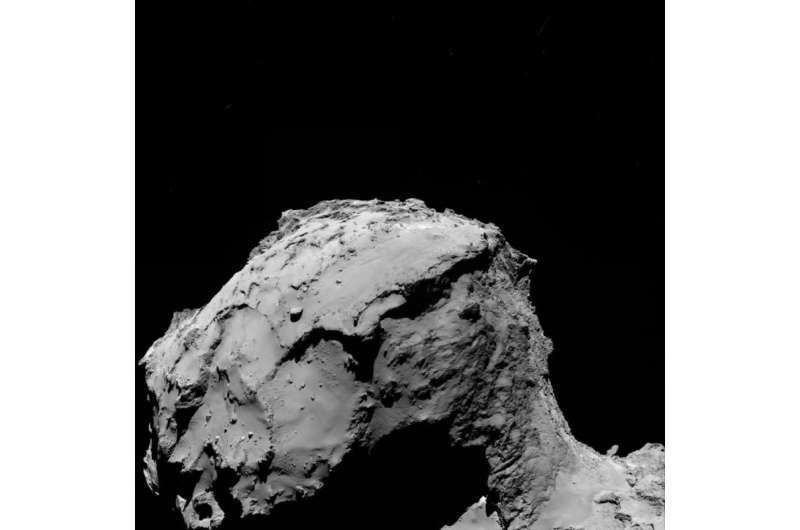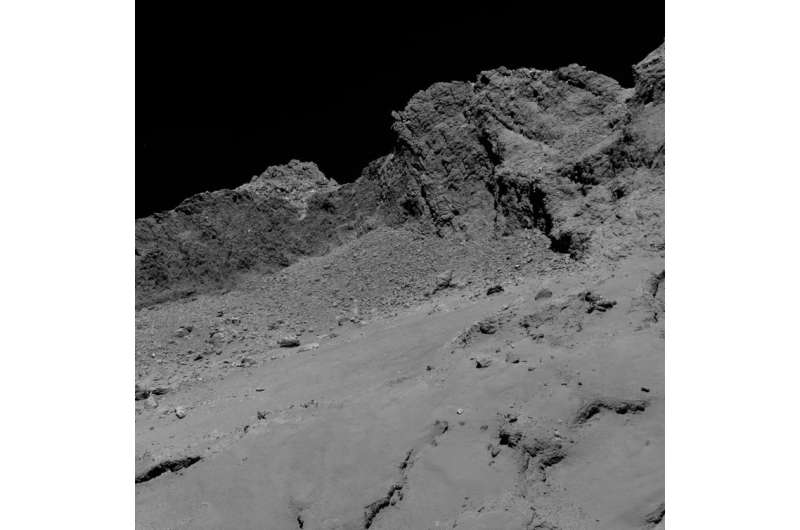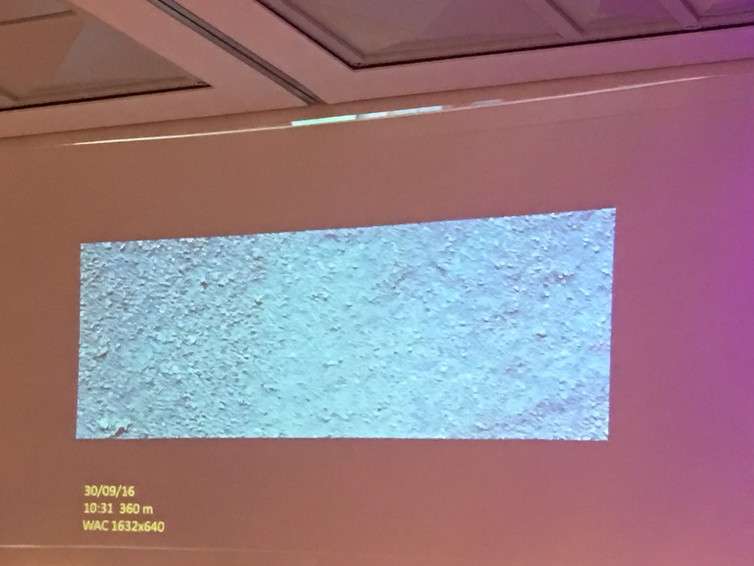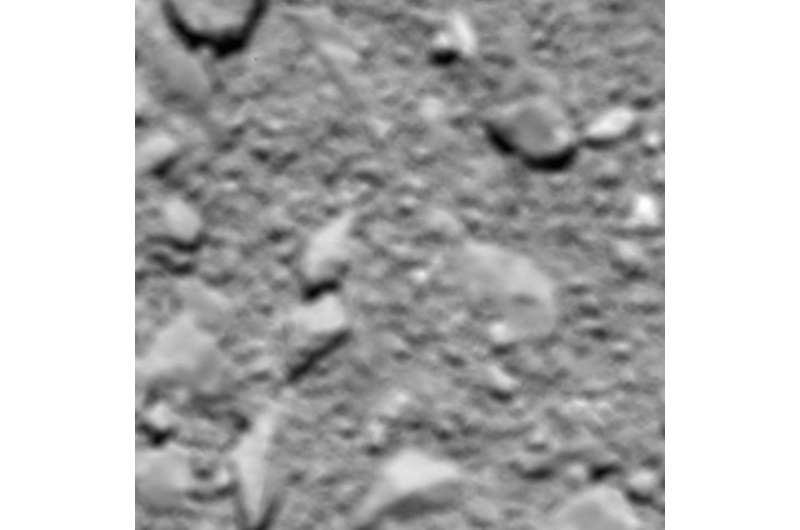Comet 67P taken with a wide-angle lens from an altitude of about 15.5km above the surface during the spacecraft’s final descent on September 30. Credit: ESA/Rosetta/MPS for OSIRIS Team MPS/UPD/LAM/IAA/SSO/INTA/UPM/DASP/IDA, CC BY-SA
It's over. Really over. The Rosetta spacecraft has taken its last image, sniffed its last gasp and held its final press conference. To a chorus of sighs from the assembled scientists and engineers, the mission came to a quiet end. Immediately, the audience of 300 or so gathered in the European Space Operation Centre's auditorium, got to its feet and gave a spontaneous standing ovation to the flight team in mission control who had overseen the delicate and, ultimately, terminal manoeuvre.
It was an emotional moment. For 40 minutes, we had been listening to different speakers connected with Rosetta, hearing brief reports of mission highlights. Holger Sierks, the principal investigator of the OSIRIS camera team, showed the most recent images of comet 67P, taken on the final 19km flight to the surface. The images were crisp and clear, showing beautifully detailed landscapes.
Then, with five minutes to go, the chairwoman of the event said that we were going to go over to mission control, and watch with the flight engineers as Rosetta landed. We weren't going to see any live pictures of the touchdown – the camera focused on the computer screen showing the communications signal. When the trace winked out, Sylvain Lodiot, ESA's spacecraft operations manager, symbolically removed his headset, through which he had been listening to the steady beat of Rosetta's electronic heart. "This is the end of the Rosetta mission," he said, adding "thank you and goodbye". He turned to the rest of the team, and as they hugged each other, tears were shed.
Comet seen from an altitude of about 16km during the spacecraft’s final descent on September 30. Credit: ESA/Rosetta/MPS for OSIRIS Team MPS/UPD/LAM/IAA/SSO/INTA/UPM/DASP/IDA, CC BY-SA
But science waits for no one, and within less than a minute, the audience was rapt as Sierks revealed the final few images transmitted before communications ceased. With a wry grin at the one taken 360 metres above the surface, he commented that it would keep the boulder counters occupied for quite some time.
The final image, taken a mere five seconds before landing, was out of focus. Out of focus – how dare it be! The camera was taking a picture that it had not been designed to capture, and we were shown the unprocessed, raw image. Maybe we just expect too much sometimes. Many angular boulders of different sizes, between 30-70cm across can clearly be seen, sitting on a more fine-grained soil.
When emotions have calmed down, it will be time to reflect on Rosetta's legacy. The science will speak for itself, and will keep analysts and theoreticians occupied for at least the next decade. But beyond that? Rosetta, like all space missions, acts as a technological and engineering springboard for the next series of missions. Advances in electronics, optics and communications, as well as design and engineering generally, ensure that Rosetta will be remembered, with new instruments developed based on those flown to the comet.
But perhaps Rosetta's greatest legacy will be the students, still at school, who have followed the adventures of Rosetta and Philae, and who are inspired to take up science and engineering with the aspiration of themselves being part of future space missions. And that is certainly a legacy of which to be proud.
-
Comet from 360 metres.
-
Last image, taken shortly before impact at an estimated altitude of 51 metres. Wide-angle camera. Credit: ESA, CC BY-SA
Rosetta cartoon. Credit: ESA
Source: The Conversation
This article was originally published on The Conversation. Read the original article.
![]()


























